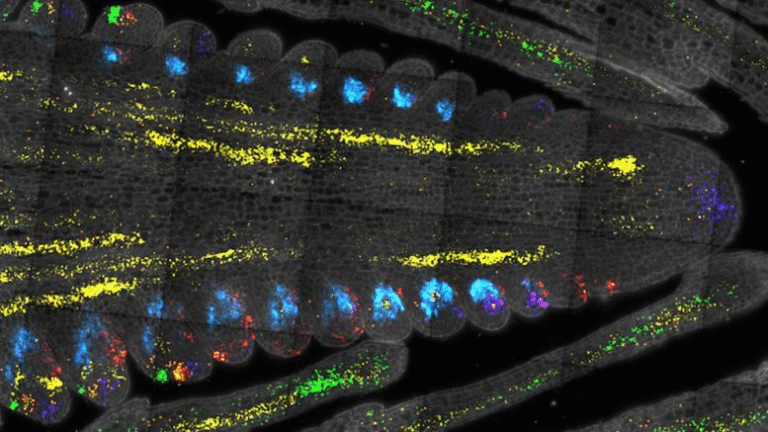Scientists Uncover a Natural Molecule That Silences Hunger: How Exercise Triggers the Brain to Eat Less

A team of researchers from Baylor College of Medicine, the Jan and Dan Duncan Neurological Research Institute (Duncan NRI) at Texas Children’s Hospital, and Stanford University School of Medicine has discovered a remarkable mechanism that could reshape our understanding of how exercise helps control weight. Their study, published in Nature Metabolism on September 16, 2025, explains how a molecule called Lac-Phe—naturally produced in the body during physical activity—acts on specific brain cells to reduce hunger.
The finding doesn’t just show that exercise burns calories. It also demonstrates how it can biochemically suppress appetite, providing a direct molecular link between physical activity and reduced food intake. The implications are significant: this could pave the way for new weight-loss treatments that harness or mimic this naturally occurring molecule.
What Is Lac-Phe and Why It Matters
Lac-Phe (short for N-lactoyl-phenylalanine) is a compound formed when two common substances—lactate and phenylalanine—combine in the body. Lactate is produced during intense exercise as a byproduct of energy metabolism, while phenylalanine is an amino acid found in many proteins.
Earlier research had already shown that Lac-Phe levels rise sharply after vigorous exercise, not only in mice but also in humans and even racehorses. When scientists administered Lac-Phe to obese mice, the animals ate less food and lost weight, all without experiencing side effects or changes in normal activity.
However, until this recent study, the exact mechanism—how Lac-Phe signals the brain to reduce appetite—remained a mystery.
Pinpointing Where in the Brain the Magic Happens
To uncover how Lac-Phe works, the researchers focused on two types of neurons deep inside the brain’s hypothalamus, the region that regulates hunger and metabolism.
- AgRP neurons (short for Agouti-related peptide neurons), found in the arcuate nucleus, are known to stimulate hunger. When active, they make you feel hungry.
- PVH neurons (paraventricular hypothalamic neurons), located nearby, do the opposite—they suppress appetite.
Under normal conditions, AgRP neurons keep PVH neurons quiet. This communication loop is what makes you feel hungry when your body needs food. But when something silences AgRP neurons, PVH neurons become more active, and hunger fades.
The researchers discovered that Lac-Phe directly targets AgRP neurons, suppressing their activity. When these hunger-promoting neurons quiet down, the PVH neurons are freed from inhibition and start signaling that the body has eaten enough.
The result? The test mice ate less, even though their overall movement, alertness, and behavior stayed normal.
How Lac-Phe Turns Off Hunger Signals
The team went a step deeper to figure out exactly how Lac-Phe shuts down the hunger-promoting neurons. Inside each AgRP neuron is a protein known as a KATP channel (short for ATP-sensitive potassium channel). These channels help regulate a cell’s electrical activity—when they open, the neuron becomes less active.
The researchers found that Lac-Phe activates these KATP channels, essentially flipping a switch that reduces AgRP neuron firing. When these neurons slow down, the urge to eat drops.
To confirm this mechanism, scientists conducted tests using both drugs and genetic tools to block the KATP channels. When the channels were blocked, Lac-Phe no longer reduced hunger. This showed that the KATP channel is essential for Lac-Phe’s appetite-suppressing effect.
The Experiments That Proved the Point
The researchers performed extensive experiments on mice to validate every step of the process:
- Behavioral studies showed that mice injected with Lac-Phe consumed significantly less food during short-term feeding tests (over three hours).
- Electrophysiological recordings of brain slices revealed that Lac-Phe changed the electrical properties of AgRP neurons, causing them to fire less often.
- Imaging studies demonstrated that once AgRP neurons were inhibited, PVH neurons became more active.
- Genetic experiments further confirmed that when KATP channels were disabled in AgRP neurons, Lac-Phe had no effect.
Interestingly, the team also verified that Lac-Phe does not act directly on PVH neurons. Instead, its effects are entirely mediated through the suppression of AgRP activity.
Throughout the tests, the mice showed no signs of discomfort or sickness, suggesting that Lac-Phe specifically targets hunger pathways without affecting other brain functions.
Why This Discovery Matters
This study provides one of the clearest explanations yet of how exercise naturally curbs appetite. It’s not just that working out burns calories—it also triggers a biochemical feedback loop that tells the brain to eat less afterward.
The implications are exciting. If scientists can safely replicate this effect, it could lead to new therapies for obesity and metabolic diseases such as diabetes. Treatments could potentially target the Lac-Phe pathway, mimicking the appetite-reducing benefits of exercise for people who are unable to work out due to health or mobility issues.
However, it’s important to note that all experiments so far have been conducted in mice. While there’s evidence that humans produce Lac-Phe during exercise, scientists still need to determine whether the same neural mechanism exists in people.
Open Questions and Next Steps
The study opens up several avenues for future research. Scientists still need to understand:
- How exactly Lac-Phe reaches the brain after exercise—does it cross the blood-brain barrier, or does it act through indirect signaling pathways?
- How long does the appetite-suppressing effect last, and does it vary with different forms of exercise?
- Could chronic use of Lac-Phe or similar compounds lead to tolerance or side effects?
- What is the role of Lac-Phe in people with different metabolic states, such as obesity, diabetes, or leanness?
These are important questions that must be answered before considering Lac-Phe as a treatment.
Links Between Lac-Phe, Exercise, and Metabolism
Interestingly, this isn’t the first time Lac-Phe has appeared in scientific discussions about metabolism. Earlier studies linked higher Lac-Phe levels with greater fat loss during exercise programs. In human studies, individuals who produced more Lac-Phe during workouts tended to lose more body fat over time.
There’s also evidence that metformin, a common medication used to treat type 2 diabetes, increases Lac-Phe production. Metformin alters how the body uses energy by affecting mitochondria and increasing lactate levels—this may indirectly raise Lac-Phe levels. That connection could help explain some of metformin’s appetite-reducing effects in patients.
These findings suggest that Lac-Phe might be part of a broader network of signals linking exercise, metabolism, and appetite control.
The Role of the CNDP2 Enzyme
Scientists have also identified the enzyme responsible for producing Lac-Phe: CNDP2, a type of nonspecific dipeptidase. CNDP2 combines lactate and phenylalanine to form Lac-Phe. This enzyme is found in many tissues throughout the body, which means Lac-Phe could be produced in multiple organs—not just in muscle.
Understanding how CNDP2 activity changes during exercise could be crucial for figuring out how to enhance or regulate Lac-Phe production naturally.
Challenges in Turning This into a Treatment
While the discovery is promising, turning Lac-Phe into a safe, effective treatment won’t be easy. Some challenges include:
- Delivery: In animal studies, Lac-Phe had to be injected to work effectively. Oral administration didn’t reduce appetite, possibly because the molecule was broken down before reaching the brain.
- Safety: Although no side effects were seen in mice, long-term safety in humans is unknown.
- Regulation: Because Lac-Phe affects the brain’s hunger circuits, precise dosing and timing would be critical to avoid unwanted effects on mood or energy.
Additionally, some of the study’s authors are listed on a patent for using lactoyl amino acids to treat metabolic diseases, highlighting the commercial interest in this line of research.
What This Means for Everyday Life
For now, this discovery doesn’t change what people should do to manage their weight—but it deepens our understanding of why exercise is so effective. It shows that exercise does more than just burn calories. It triggers natural appetite-control mechanisms, helping the body balance energy more efficiently.
Even without a Lac-Phe pill on the market, this research reinforces the message that consistent physical activity benefits both metabolism and appetite regulation. As scientists learn more about Lac-Phe and related compounds, we may eventually see new treatments that mimic the benefits of exercise for those who need it most.
The Road Ahead
Future research will likely focus on how Lac-Phe functions in humans and whether it can be safely boosted through diet, supplements, or medications. Scientists also hope to uncover how factors like age, sex, fitness level, and metabolic health influence Lac-Phe production.
If the findings hold true in people, Lac-Phe could become a major breakthrough in the fight against obesity—offering a biological shortcut to one of exercise’s most valuable effects: natural appetite control.
Research Reference:
Lac-Phe induces hypophagia by inhibiting AgRP neurons in mice – Nature Metabolism (2025)





